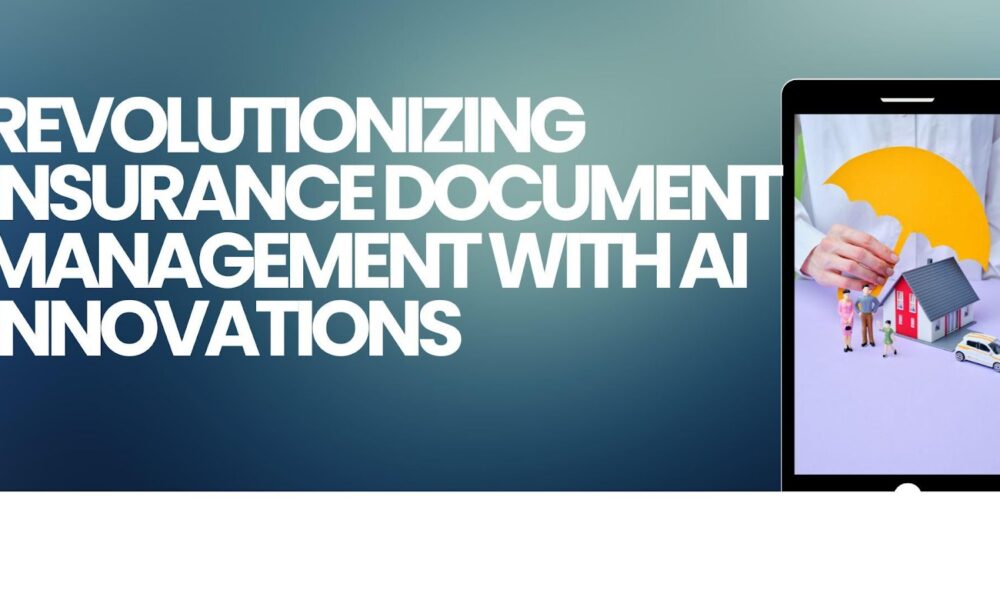In a rapidly evolving digital landscape, the integration of Artificial Intelligence (AI) has redefined how the insurance industry manages its vast documentation workflows. Sanath Chilakala, an expert in AI-driven automation, explores these groundbreaking innovations in his latest research. This article delves into the transformative impact of AI on insurance document management, shedding light on the latest advancements that are shaping the industry’s future.
AI-Powered Document Processing: A Paradigm Shift
Traditionally, the insurance sector has been burdened by manual document processing, consuming significant time and resources. AI-driven automation has drastically altered this landscape by enabling intelligent document processing (IDP) systems. These systems can process thousands of insurance-related documents per hour, significantly reducing errors and expediting workflows. By leveraging machine learning (ML) and natural language processing (NLP), insurers can now classify, extract, and verify information with unprecedented accuracy.
Natural Language Processing: Enhancing Accuracy and Efficiency
NLP forms the backbone of modern insurance document management. Advanced NLP architectures are trained on vast datasets comprising policies, claims, and customer correspondence, enabling AI models to understand and process insurance-related content with remarkable precision. Modern transformer-based models have achieved near-human accuracy in interpreting policy documents, extracting key entities such as coverage limits and exclusions with 97.5% precision. This advancement eliminates the need for manual document review, allowing insurers to streamline operations while maintaining compliance.
Machine Learning in Risk Assessment and Claims Processing
Machine learning algorithms are now integral to risk assessment and claims processing. These models analyze thousands of risk factors in real time, significantly reducing the time required for underwriting decisions. AI-powered systems have successfully accelerated policy approvals, reducing underwriting time from several days to mere minutes. In claims processing, automated AI solutions have cut average processing times from weeks to just hours, enhancing efficiency and customer satisfaction. Implementing deep learning models has further refined fraud detection, minimizing erroneous payouts and improving overall claim management integrity.
Large Language Models (LLMs)
Large Language Models (LLMs) are advanced artificial intelligence systems trained on vast datasets to understand and generate human-like text. They leverage deep learning techniques, primarily transformer architectures, to process and generate language efficiently—applications of LLMs.LLMs are widely used in chatbots, content generation, code assistance, and translation services. They enhance search engines and automate customer support.
Intelligent Personalization and Customer Engagement
Beyond operational efficiencies, AI is transforming customer engagement in the insurance sector. AI-driven personalization engines analyze customer data to generate tailored policy recommendations, reducing policy-related queries by 45%. AI-powered communication systems ensure that customer inquiries are addressed within minutes, drastically improving response times. Additionally, automated document generation systems enable insurers to produce clear and comprehensible policies, reducing ambiguity and improving customer trust. Machine learning algorithms are now being deployed to predict customer lifetime value and churn probability, enabling proactive retention strategies. Advanced sentiment analysis tools monitor customer feedback across multiple channels, providing insurers with real-time insights into satisfaction levels and emerging concerns. This comprehensive approach to AI-enhanced customer service is revolutionizing.
The Future of AI in Insurance Documentation
The evolution of AI in the insurance industry is far from over. Quantum computing holds the potential to further enhance document processing speeds, while advanced AI models continue to refine accuracy levels. The future also points toward enhanced AI-driven policy generation, where real-time risk assessment and customer insights will drive fully personalized insurance offerings. As AI adoption continues to grow, the insurance sector is poised for unprecedented innovation, setting new benchmarks for efficiency and reliability. Furthermore, emerging technologies like blockchain integration and IoT sensors are creating new possibilities for automated claims processing and fraud detection. Industry experts predict that AI-powered predictive analytics will revolutionize underwriting processes, enabling insurers to better assess risks and optimize premium pricing structures while improving customer satisfaction through streamlined experiences.
In conclusion, Sanath Chilakala’s insights into AI-powered insurance documentation highlight a fundamental shift in industry operations. By integrating AI-driven automation, insurers are achieving remarkable efficiency gains, reducing processing times, and improving customer satisfaction. As AI technology continues to evolve, its role in reshaping the insurance landscape remains undeniable, paving the way for a future defined by intelligent, automated, and customer-centric solutions.












